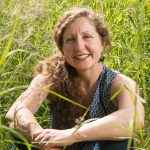Geos Institute asks Forest Service to speed up its transition by filing an objection to its logging plans
Objections to Tongass Forest Plan amendment start rolling in
by Aaron Bolton, (originally published in KSTK News)
August 3, 2016 6:00 am
The U.S. Forest Service announced its plan for a 16-year transition toward young-growth Tongass timber harvests in late June. In the midst of the 60-day comment period, industry and environmental groups are starting to submit their objections.
Both the industry and environmental groups on either side of the Tongass Land Management Plan amendment can agree on one thing: the Forest Service needs to complete a full inventory of young-growth Tongass timber.
But their reasons are fundamentally different.
Geos Institute objects to Forest Service plan to log primary rainforest on the Tongass
The Tongass is one of the world’s last great temperate rainforests and is under threat of clearcut logging that will eliminate over 43,000 acres of old growth, mostly in the next 16 years. The logging plan is an embarrassment to President Obama’s climate change policies as it would lead to emissions equivalent of nearly 4 million vehicles annually. There is a better way to transition logging to previously logged and regrown forests that will help save Alaska’s rapidly changing climate and create sustainable timber jobs but only if President Obama steps in to direct the Forest Service’s rogue logging plan.
Read the full objection here in a letter sent July 27, 2016 to the USDA Forest Service
Siuslaw forestry practices offer great example for Tongass
By Dominick DellaSala, Catherine Mater, and Jim Furnish
For The Register-Guard, July 16, 2016
The recent release of the U.S. Forest Service’s old growth logging plans for Alaska’s Tongass National Forest stalls urgent climate change protections and relies on old school forestry.
What happens in the Tongass is important to Oregonians, and the nation, because this national forest absorbs about 8 percent of the nation’s carbon dioxide pollution annually — far more than any other forest. And what is happening in the Siuslaw National Forest can inform the Tongass.
The Tongass plan calls for continued old growth logging, mostly over the next 16 years, threatening 43,000 acres of Tongass rainforest. This long time frame will unnecessarily release the equivalent emissions of 4 million vehicles annually over the next 100 years at a time when nations are looking to cut back on carbon pollution.
Siuslaw forestry practices offer great example for Tongass
By Dominick DellaSala, Catherine Mater, and Jim Furnish
For The Register-Guard, July 16, 2016
The recent release of the U.S. Forest Service’s old growth logging plans for Alaska’s Tongass National Forest stalls urgent climate change protections and relies on old school forestry.
What happens in the Tongass is important to Oregonians, and the nation, because this national forest absorbs about 8 percent of the nation’s carbon dioxide pollution annually — far more than any other forest. And what is happening in the Siuslaw National Forest can inform the Tongass.
The Tongass plan calls for continued old growth logging, mostly over the next 16 years, threatening 43,000 acres of Tongass rainforest. This long time frame will unnecessarily release the equivalent emissions of 4 million vehicles annually over the next 100 years at a time when nations are looking to cut back on carbon pollution.
Scientific studies by Oregon-based organizations demonstrate that Tongass forests clearcut in the 1950s, which have since regrown as “second growth,” can meet timber demand while leaving old growth standing. In 2015, Mater Engineering Ltd. of Corvallis spearheaded the most intensive timber cruises ever conducted on the Tongass, focusing on 55-year-old second growth stands to meet timber targets of the Forest Service. The conclusion: By 2020, second growth levels reach wood supply levels not seen in southeast Alaska since the 1980s.
It makes dollars and sense to move quickly into second growth. The costs of carbon pollution from increased health and economic impacts would exceed timber revenues by a factor of at least 10 by mid-century. And second growth volume will come from low-controversy acres yielding much lower logging emissions than old growth logging while hastening logs to the mills.
This solution has been working in Oregon’s Siuslaw National Forest since the 1990s, when spotted owl protections prompted a quick transition to second growth not needed by the owl but necessary for an industrial transition. The Siuslaw’s exemplary vision is what’s needed now in Alaska.
But the Tongass logging plan blatantly contradicts U.S.-led efforts on the Paris Climate Change Agreement, which promotes measures to protect carbon stored in forests to help head off dangerous global temperature increases.
On the heels of news that global carbon dioxide levels have rapidly increased to levels that have not occurred for thousands of years, Oregon forest experts from the Geos Institute and Mater Engineering charge the Forest Service with relying on old school forestry that violates the Paris agreement. Nations are now working to store more carbon in trees while the Tongass leads by example with industrial clearcuts.
And just this month, Secretary of State John Kerry issued a joint statement with Norway’s environment minister: “The science is clear: conserving, restoring and sustainably managing the world’s natural forests is critical to achieving a safe, secure, and sustainable world.”
Fortunately, there is still time for the Tongass to embrace a swift transition that will benefit the timber industry while protecting the region’s world-class rainforests. President Obama needs to direct the Forest Service to speed up the transition as part of his climate change legacy. The Tongass needs to get with the climate change program, as other national forests already have, by following the Siuslaw example.
Dominick DellaSala is chief scientist of the Ashland-based Geos Institute and editor of Temperate and Boreal Rainforests of the World: Ecology and Conservation. Catherine Mater is president of Mater Engineering Ltd. Jim Furnish is retired deputy chief of the U.S. Forest Service and supervisor of the Siuslaw National Forest.
Tongass logging plan is an embarrassment to President Obama’s climate change policies
The Tongass National Forest is the nation’s carbon champion, storing about 8% of the nation’s annual global warming emissions in its productive old-growth rainforests. The Forest Service proposes to clearcut 43,000 acres of old growth, mostly in the next 16 years. Logging emissions would release the equivalent emissions of 4 million vehicles annually while squandering one of the world’s last relatively intact temperate rainforests.
- Letter to CEQ (Council on Environmental Quality), OMB (Office of Management and Budget), and the U.S. Department of State
- Press Release
Media Coverage
- Final EIS would end Tongass old-growth logging in 16 years, GreenWire article published July 5, 2016 (don’t have a subscription? You can read the article here)
- Forest Service announces changes to Tongass plan, Juneau Empire (June 30, 2016)
- TLMP amendment draft decision announced, KRBD radio (June 30, 2016)
- My Turn: Tongass logging transition doesn’t do enough for old growth or timber jobs, Juneau Empire (July 7, 2016)
Obama Administration Should Protect Tongass National Forest Old Growth To Achieve Urgent Climate Change Goals
For Immediate Release on June 30, 2016
– Tongass Logging Plan Ignores Fast Exit from Old-growth Logging
– Agency Relies on Old School Forestry Tactics
– Contradicts Secretary of State John Kerry’s and President Obama’s Climate Statements
Media Contact: Dominick DellaSala, GEOS Institute | Dominick@geosinstitute.org 541- 482-4459 x 302; 541-621-7223 (cell)
Ashland, OR – The release of the Forest Service’s old-growth logging plan (Final Environmental Impact Statement) for the Tongass National Forest stalls urgent climate change protections and runs counter to the Obama administration’s climate change directives. The plan contradicts the US-led Paris Climate Change Agreement that includes measures to protect vast amounts of carbon stored in forests to help head off dangerous global warming. The Forest Service’s plan calls for continued logging of old growth trees for another 16 years, which threatens 43,000 acres of Tongass old-growth rainforest. The unnecessarily long timeframe will release the equivalent emissions of 4 million vehicles annually over the next 100 years at a time when nations are looking to cut back on emissions.
Tongass logging plan is an embarrassment to President Obama’s climate change policies
The Tongass National Forest is the nation’s carbon champion, storing about 8% of the nation’s annual global warming emissions in its productive old-growth rainforests. The Forest Service proposes to clearcut 43,000 acres of old growth, mostly in the next 16 years. Logging emissions would release the equivalent emissions of 4 million vehicles annually while squandering one of the world’s last relatively intact temperate rainforests.
- Letter to CEQ (Council on Environmental Quality), OMB (Office of Management and Budget), and the U.S. Department of State
- Press Release
Media Coverage
- Final EIS would end Tongass old-growth logging in 16 years, GreenWire article published July 5, 2016 (don’t have a subscription? You can read the article here)
- Forest Service announces changes to Tongass plan, Juneau Empire (June 30, 2016)
- TLMP amendment draft decision announced, KRBD radio (June 30, 2016)
- My Turn: Tongass logging transition doesn’t do enough for old growth or timber jobs, Juneau Empire (July 7, 2016)
New Article Shows Tongass Transition Can Occur Swiftly
A new article “Opportunity in Crisis: How Second Growth Timber in Alaska Will Help” by Catherine M. Mater outlines the opportunity for a rebirth of a healthy forest products industry in Alaska that doesn’t depend on old growth logging. Read the full article here.
My Turn: Tongass transition plan lacks initiative
By Dominick A. DellaSala and Jim Furnish, for the Juneau Empire
Change is not for the risk averse. It is scary stuff that takes us out of our comfort zones and into the unknown.
It’s also how we adapt, meet challenges and improve outcomes for our communities and ourselves. People in Southeast Alaska know that better than most. Over the past quarter century, the region has been moving beyond boom-and-bust cycles of unsustainable resource extraction and export. Today, world-class, sustainably managed fisheries, tourism and recreation lead economic diversification that has replaced most old-growth logging.
The time is past due for the Forest Service to ride the change wave. In 2010, Agriculture Secretary Tom Vilsack recognized that when he announced a transition away from logging old growth and roadless areas on the Tongass would help “communities stabilize and grow new jobs.” His Alaska Regional Forester agreed, saying that the Forest Service would transition “quickly.”
My Turn: Tongass transition plan lacks initiative
By Dominick A. DellaSala and Jim Furnish, for the Juneau Empire
Change is not for the risk averse. It is scary stuff that takes us out of our comfort zones and into the unknown.
It’s also how we adapt, meet challenges and improve outcomes for our communities and ourselves. People in Southeast Alaska know that better than most. Over the past quarter century, the region has been moving beyond boom-and-bust cycles of unsustainable resource extraction and export. Today, world-class, sustainably managed fisheries, tourism and recreation lead economic diversification that has replaced most old-growth logging.
The time is past due for the Forest Service to ride the change wave. In 2010, Agriculture Secretary Tom Vilsack recognized that when he announced a transition away from logging old growth and roadless areas on the Tongass would help “communities stabilize and grow new jobs.” His Alaska Regional Forester agreed, saying that the Forest Service would transition “quickly.”
Latest News
Stay Updated!
Sign up to stay updated on our current initiatives and receive information you can use to build resilience in your community.

 Samantha Medlock is President of Climate Risk Advisors, helping communities and organizations advance equity, sustainability, and resilience. Her career began chasing floods as a local official in Texas Flash Flood Alley—a hands-on experience that still shapes her approach to climate and disaster risk management.
Samantha Medlock is President of Climate Risk Advisors, helping communities and organizations advance equity, sustainability, and resilience. Her career began chasing floods as a local official in Texas Flash Flood Alley—a hands-on experience that still shapes her approach to climate and disaster risk management.
 Arsum is the Senior Adaptation and Coastal Resilience Specialist for the National Wildlife Federation’s Southcentral Region. In this role, she advances climate adaptation efforts, with a focus on nature-based approaches to address the impacts of climate change and extreme events across the Gulf region. She has authored and co-authored numerous publications on climate impact assessments and adaptation solutions. Additionally, she regularly participates in state-based coastal resilience and hazard mitigation planning across the Gulf, collaborating with regional and local stakeholders.
Arsum is the Senior Adaptation and Coastal Resilience Specialist for the National Wildlife Federation’s Southcentral Region. In this role, she advances climate adaptation efforts, with a focus on nature-based approaches to address the impacts of climate change and extreme events across the Gulf region. She has authored and co-authored numerous publications on climate impact assessments and adaptation solutions. Additionally, she regularly participates in state-based coastal resilience and hazard mitigation planning across the Gulf, collaborating with regional and local stakeholders. Frank is the former President of the Reinsurance Association of America. Frank currently serves on the Advisory Board of the OECD’s International Network for the Financial Management of Large-Scale Disasters, the RAND Center on Catastrophic Risk Management and Compensation, and the University of Cincinnati’s Carl H. Lindner III Center for Insurance and Risk Management Advisory Board.
Frank is the former President of the Reinsurance Association of America. Frank currently serves on the Advisory Board of the OECD’s International Network for the Financial Management of Large-Scale Disasters, the RAND Center on Catastrophic Risk Management and Compensation, and the University of Cincinnati’s Carl H. Lindner III Center for Insurance and Risk Management Advisory Board. Jim is a multilingual world traveler. Based in Bavaria during the 1970s, Jim spent most of this period in India, Afghanistan and Nepal, where he founded and operated a charitable medical clinic serving Tibetan Refugees. He settled in Oregon in 1983 on a forested ranch in the Umpqua National Forest.
Jim is a multilingual world traveler. Based in Bavaria during the 1970s, Jim spent most of this period in India, Afghanistan and Nepal, where he founded and operated a charitable medical clinic serving Tibetan Refugees. He settled in Oregon in 1983 on a forested ranch in the Umpqua National Forest. Dr. Micah Hahn is an Associate Professor of Environmental Health in the Institute for Circumpolar Health Studies at the University of Alaska-Anchorage. She received her joint PhD in Epidemiology / Environment and Resources from the University of Wisconsin-Madison and her MPH in Global Environmental Health from Emory University. Subsequently, she was a postdoctoral fellow for the CDC Climate and Health Program, and in this position worked collaboratively with the CDC Division of Vector-borne Diseases and the National Center for Atmospheric Research. Her research focuses on understanding the health impacts of climate change and working with communities to develop locally-relevant adaptation and resilience-building strategies. Dr. Hahn is also on the Management Team of the Alaska Climate Adaptation Science Center.
Dr. Micah Hahn is an Associate Professor of Environmental Health in the Institute for Circumpolar Health Studies at the University of Alaska-Anchorage. She received her joint PhD in Epidemiology / Environment and Resources from the University of Wisconsin-Madison and her MPH in Global Environmental Health from Emory University. Subsequently, she was a postdoctoral fellow for the CDC Climate and Health Program, and in this position worked collaboratively with the CDC Division of Vector-borne Diseases and the National Center for Atmospheric Research. Her research focuses on understanding the health impacts of climate change and working with communities to develop locally-relevant adaptation and resilience-building strategies. Dr. Hahn is also on the Management Team of the Alaska Climate Adaptation Science Center. Michael is a former Founding Principal of Resilient Cities Catalyst, a global non-profit helping cities and their partners tackle their toughest challenges. He is currently the Executive Director of Climate Resilience Academy at the University of Miami.
Michael is a former Founding Principal of Resilient Cities Catalyst, a global non-profit helping cities and their partners tackle their toughest challenges. He is currently the Executive Director of Climate Resilience Academy at the University of Miami. Dr. Quintus Jett is a consultant, educator, and strategist for public causes. He has a doctorate in Organizations & Management from Stanford University, and a two-decade faculty career which spans schools, departments, and programs of business, engineering, liberal studies, divinity, and public and nonprofit management. Following Hurricane Katrina in 2005, Dr. Jett launched a volunteer project in New Orleans, which enlisted residents, students from over a dozen colleges and universities, and hundreds of others to field map the city’s Gentilly district, Lower Ninth Ward, and New Orleans East. Dr. Jett is an innovator in higher education, bridging the divide between academic research and the other priorities of the modern university, including student access and diversity, community engagement, and providing foundations for life-long learning in today’s rapidly changing world.
Dr. Quintus Jett is a consultant, educator, and strategist for public causes. He has a doctorate in Organizations & Management from Stanford University, and a two-decade faculty career which spans schools, departments, and programs of business, engineering, liberal studies, divinity, and public and nonprofit management. Following Hurricane Katrina in 2005, Dr. Jett launched a volunteer project in New Orleans, which enlisted residents, students from over a dozen colleges and universities, and hundreds of others to field map the city’s Gentilly district, Lower Ninth Ward, and New Orleans East. Dr. Jett is an innovator in higher education, bridging the divide between academic research and the other priorities of the modern university, including student access and diversity, community engagement, and providing foundations for life-long learning in today’s rapidly changing world. Scott is Monfort Professor of Atmospheric Science at Colorado State University. He has written about 100 publications in the peer-reviewed climate literature, is a former editor of the Journal of Climate, and served for five years as founding Science Chair of the North American Carbon Program.
Scott is Monfort Professor of Atmospheric Science at Colorado State University. He has written about 100 publications in the peer-reviewed climate literature, is a former editor of the Journal of Climate, and served for five years as founding Science Chair of the North American Carbon Program. Linda has many years of experience in disaster preparedness and resilience. She has been an elected official on the Linn County Iowa Board of Supervisors, Chair of the Metropolitan Planning Organization, the East Central Iowa Council of Governments, the statewide Mental Health Developmental Disability and the Linn County Board of Health. Langston is a former president of the National Association of Counties (2013-2014).
Linda has many years of experience in disaster preparedness and resilience. She has been an elected official on the Linn County Iowa Board of Supervisors, Chair of the Metropolitan Planning Organization, the East Central Iowa Council of Governments, the statewide Mental Health Developmental Disability and the Linn County Board of Health. Langston is a former president of the National Association of Counties (2013-2014). Ken works with families and organizations as a mediator, organizational consultant, trainer and facilitator. Along with his passion for helping people prepare for and reduce climate change, Ken also volunteers as a mediator through Mediation Works and is passionate about supporting youth through mentoring with Boys to Men of Southern Oregon.
Ken works with families and organizations as a mediator, organizational consultant, trainer and facilitator. Along with his passion for helping people prepare for and reduce climate change, Ken also volunteers as a mediator through Mediation Works and is passionate about supporting youth through mentoring with Boys to Men of Southern Oregon. Matthew is a retired high school teacher who was once honored as Oregon High School Social Studies Teacher of the Year. Before his teaching career he was in the restaurant business in Portland. He is also a lawyer who has been a member of the Oregon State Bar Association since 1980.
Matthew is a retired high school teacher who was once honored as Oregon High School Social Studies Teacher of the Year. Before his teaching career he was in the restaurant business in Portland. He is also a lawyer who has been a member of the Oregon State Bar Association since 1980. Andrea is the Resilience Policy Advisor for the North Carolina Office of Recovery and Resiliency. She works across state agencies and with local governments to increase the state’s resilience to the impacts of climate change.
Andrea is the Resilience Policy Advisor for the North Carolina Office of Recovery and Resiliency. She works across state agencies and with local governments to increase the state’s resilience to the impacts of climate change.